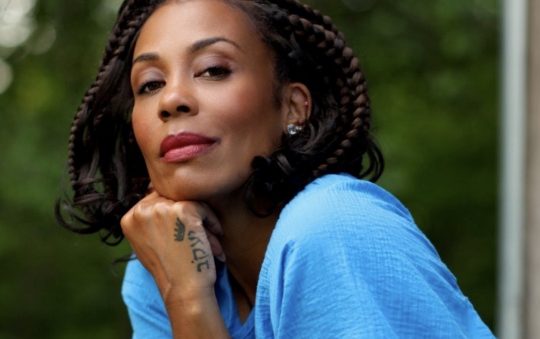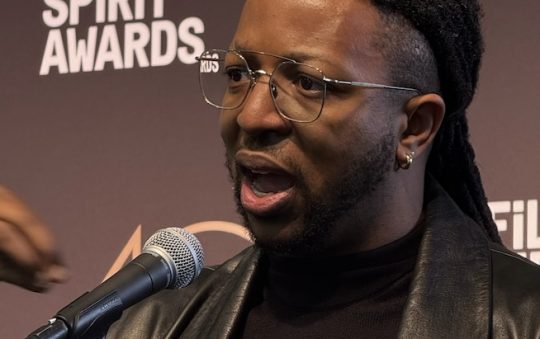
By Magrira, Contributing Writer
Let’s start with the facts of the matter on immigration and the Mexican community. America has a nasty little habit of rewriting “his-tory” (break it down, and you get it) especially when it comes to Brown and Black folks.
To wit. The city’s name, Los Angeles, literally translates to “the angels” in Spanish. Officially recorded in 1781, the city was established by 44 settlers, immigrants from central New Spain (modern Mexico), in what is now Downtown Los Angeles. Among these early inhabitants were over two dozen Afro-Spanish individuals from the Spanish colonies in California, part of New Spain. Notably, Pío Pico, California’s last governor under Mexican rule, had mixed Spanish, Native American, and African ancestry.
Related Links:
https://lasentinel.net/domingo-to-receive-tiff-tribute-performer-award-at-toronto-film-festival.html
https://lasentinel.net/hollywoods-elite-converge-for-academy-museum-gala-powered-by-rolex.html
When I mention my Afro-Mexican heritage, I’m often met with disbelief, receiving skeptical looks from both the African American and Mexican communities.
Knowledge is power. As I delve deeper into my heritage, I find connections with others like me. I’ve posed the question of how they celebrate Día de los Muertos (Day of the Dead), one of Mexico’s biggest holidays, which has just begun and lasts until November 2nd. It felt like the perfect time to share this story.
Like millions of people, I confess, I check out TikTok. There, I connected with Cali resident Michael Baca, aka “the Black Mexican” [https://www.instagram.com/theblackmexicannn/], Nioby, an Afro-Mexican fashion, beauty, and lifestyle influencer, and in New York, Mercedes White, head of the theater program at The Harlem School of The Arts and the producer of the short film “Taking The E Train: Magical Harlem.” I reached out to them to get their thoughts on being Afro-Mexican and how they honor their dearly departed loved ones via Día de los Muertos (Day of the Dead).

But before I share that, allow me to address some misconceptions about Día de los Muertos (Day of the Dead). Much pushback actually comes from African American religious communities and other Spanish-speaking communities. Perhaps it’s the skull decorations that trouble them or the belief that the departed, including pets, return to visit. Many also feel uneasy about the ofrenda, or altar, associating it with Santeria and Voodoo. However, nothing could be further from the truth.
Creating an ofrenda, often in private homes and cemeteries, is a simple yet profound way to honor our departed loved ones. It includes family photos, marigolds, offerings, water, food, salt, candles, and Pan de Muerto adorned with bones and skulls, symbolizing the circle of life. The scent of copal incense lingers, carrying prayers and purifying the space, creating a sacred atmosphere—an inviting return for spirits.
Día de los Muertos is deeply rooted in ancient traditions of Aztec, Toltec, and Nahua communities, where death was seen as a natural phase in life’s cycle, not an endpoint.
UNESCO recognized this cultural heritage in 2008, designating it as an Intangible Cultural Heritage of Humanity. This acknowledgment emphasized that traditions like Día de los Muertos aren’t relics but living expressions passed down through generations.
Here’s what Michael Baca, Nioby Monroe, and Mercedes White shared about being Afro-Mexicans in this country and why embracing both of our cultures, of which we are equally proud, is important.
Los Angeles Sentinel: Thank you so much, Michael Baca, aka The Black Mexican. My brother from another mother. So happy to meet you.
Michael Baca: I feel the same, my Afro-Mexican sister.
LAS: Let’s jump into it. How do you celebrate Día De Los Muertos?
MB: I celebrate Día De Los Muertos by spending time with my family and remembering the loved ones who have passed. We tell funny stories about them, and most importantly, we teach the children about relatives who have passed. Talking about relatives that have passed is our way of keeping them alive in our hearts. It is very important to my family that we remember our loved ones because we believe you only actually die when nobody remembers you.
LAS: I feel you, and I agree. What does being Blaxican or Afro-Latino mean to you?
MB: When I was growing up, I would choose to identify as Mexican or Black only because I feel like society puts you into a box and forces you to identify with being Mexican or Black. Many job applications still force you to identify as Black or Hispanic, and if you check the box for Hispanic, then you cannot choose the box for Black or any other race. Also, as a content creator, I have received many comments telling me that I cannot identify as Blaxican, and comments such as, “if your dad is black, then you’re black.” Being Blaxican or Afro-Latino is a way that I show respect to both of my cultures, which I respect and am proud to be a part of.
LAS:: I wear my heritages with great pride. Facts. What challenges did you face being Blaxican or Afro-Latino?
MB: Some of the challenges I have felt are not feeling like I belong to any specific culture. When I was younger, I didn’t feel “Mexican enough” to call myself Mexican, while at the same time not feeling “black enough” to call myself Black. As I got older, however, I feel as though I began to embrace both of my cultures, which, in turn, made me begin to truly embrace myself.

LAS: Self-embracing goes with self-love. Do you feel connected to your Latino roots?
MB: As I have gotten older, I have become much more connected to my Latino roots. As someone who grew up in Southern California, I always heard Spanish, but did not put in the effort to learn that I wish I would have put in when I was younger. I have also begun to visit the beautiful country of Mexico, and I must say, I have definitely begun to have a strong affection for the country. I also am a content creator who has been studying in-depth about the experiences of other Latinos, and after becoming more proficient in speaking Spanish, I definitely feel more connected to my Latino roots than ever before.
LAS: Miss. Nioby Monroe, it must be interesting as a model and influencer representing both side of your DNA on a global scale?
Nioby Monroe: It is. You are right and by embracing my African American and Mexican American heritage that entails embodying the rich cultural traditions and experiences of both ancestries. It means having a unique identity that intertwines the histories, struggles, achievements, and resilience of two distinct communities.
LAS: What challenges did you face, if any, growing up?
NM: The challenges I’ve faced since childhood, and even now, stem from the fact that I’ve never fit neatly into any predefined category, leaving people often unable to truly understand me.
LAS: Growing up as both African American and Afro-Mexican, what’s it like to live between both of those worlds?
Mercedes White: Honestly, it was both awesome and confusing. Throughout my upbringing, my awareness of my Black identity was limited. I knew I was Black – how could I not? But blackness is more than just skin color, and I struggled to relate. It wasn’t until I ventured into my predominantly Mexican neighborhood that I was sharply reminded of my differences. Despite sharing the same cultural upbringing and participating in the same traditions as my Mexican peers, I was always seen as Black, and that was that. This confusion escalated when my father’s side of the family insisted, without relenting, that I was not Black but Mexican. So how was this experience both awesome and confusing? Well, it was a mix of both. As a child, all I wanted was to belong. Yet, as I grew older, I realized that regardless of what others said or thought, I belonged to both cultures. Nothing could change that fundamental truth.
Related Links:
https://www.tiktok.com/@niobymonroe
https://www.instagram.com/nioby_/
https://www.tiktok.com/@theblackmexicann/video/7182780429160860974
https://www.olveraevents.com/day-of-the-dead-olvera-street






